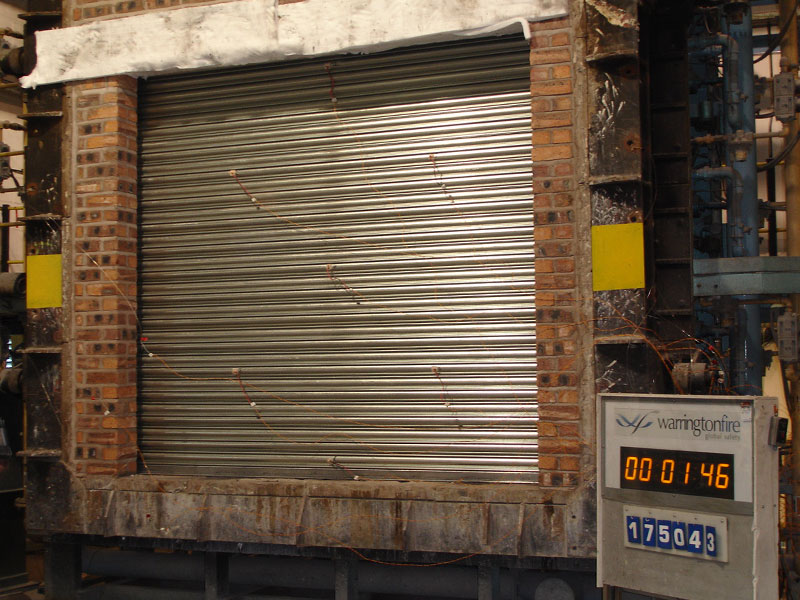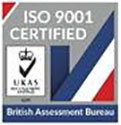With thousands of cases of fires in workplaces across the UK every year, fire safety should be a major consideration of every employer or property manager – and not just because it’s a legal requirement.
More than just a box to tick, fire safety protects your premises, your stock and – above all – your employees.
As a manufacturer and provider of fire-resistant doors, we get a lot of questions about fire safety. Here, we’ll talk through the basics, and discuss what we can do at NGF to help you meet your responsibilities.
Who is responsible for fire safety?
In the workplace, you can’t just assume that someone else is going to take care of fire safety – as an employer, even if you’re just an occupier of your premises rather than the owner, you still have responsibilities.
These include carrying out fire risk assessments regularly, putting fire safety measures in place, planning for emergencies, and providing staff with all the necessary information about the risks and what to do in case of a fire. When it comes to fire exits, they must be clearly marked and kept clear.
Of course, the owner or landlord will share these responsibilities too – as do facilities managers or agents, for example. When there are multiple people involved, it’s a case of working together to make sure all of these needs are met. For example, facilities managers may be responsible for organising risk assessments, whereas employers are responsible for providing training.
Again, you can’t just assume that someone’s taking care of it – everyone needs to make sure that all the bases are being covered.
The difference between fire doors and fire exit doors
Fire doors and fire exit doors aren’t the exact same thing, but both are requirements within a workplace under the need to provide clearly marked escape routes. But what’s the difference?
A fire door is an internal door. When it’s open, it provides an escape route. When it’s closed, it holds back fire and compartmentalises the building to prevent it from spreading.
Fire doors have degrees of fire resistance, and will provide protection for a certain amount of time – our fire-resisting doors and roller shutters, for example, are tested for between one and four hours of fire resistance, and meet British Standard 476 fire test requirements.
They need to either be kept closed at all times, or be fitted with devices that allow them to be closed automatically when a fire alarm goes off.

A fire exit door, on the other hand, is an external door that allows egress from the building in the event of a fire. They don’t need to be closed at all times, and they don’t necessarily have to be fire resistant, but they do need to be very easy to open from the inside.
Fire door maintenance
Fire doors and shutters are classed as “firefighting equipment” – and if they’re powered, they’re also classed as “machinery”. This means you have obligations to keep them maintained not just under fire safety regulations, but under the broader Workplace (Health, Safety and Welfare) Regulations 1992 too.
You’ll need to have regular tests to make sure any powered doors or shutters are operating properly, that automatic fire doors close correctly, and that all fire doors can be opened quickly and easily. You’ll also need to keep a log of all of this.
At NGF, we provide a regular maintenance service to help business owners, property managers, and anyone else with health and safety responsibilities keep on top of this, even if we haven’t installed your fire doors – click here if you’d like to find out more about this.
Fire safety tip: test fire doors with the back of your hand
The handle of a door to a room where a fire has broken out can become very hot. In the event of a fire, a hot door handle can be a sign that a room isn’t safe to enter.
However, you should never grab the handle with your palm. There are three reasons for this:
- Pulling your hand away from the heat may cause you to open the door to the fire
- When your hand touches something hot, its natural reflex is to close – which may mean you’ll be unable to let go
- Burns to your palms and fingers mean it may be painful or difficult to climb emergency exit ladders, or crawl to avoid smoke
Always test door handles with the back of your hand to avoid more serious burns.
Any further questions
While we can help you stay compliant in regard to your fire doors and shutters, we are unable to offer health and safety guidance beyond this. If you have any more questions about fire safety, you should consult advice from the government and the HSE, or talk to a workplace health and safety specialist.
However, if you have any questions about fire doors for your commercial property, would like a quote, or are interested in our maintenance services, then please don’t hesitate to give us a call! You can reach us on 03456 444 566, or click here to send us a message.
Back to all blog posts







